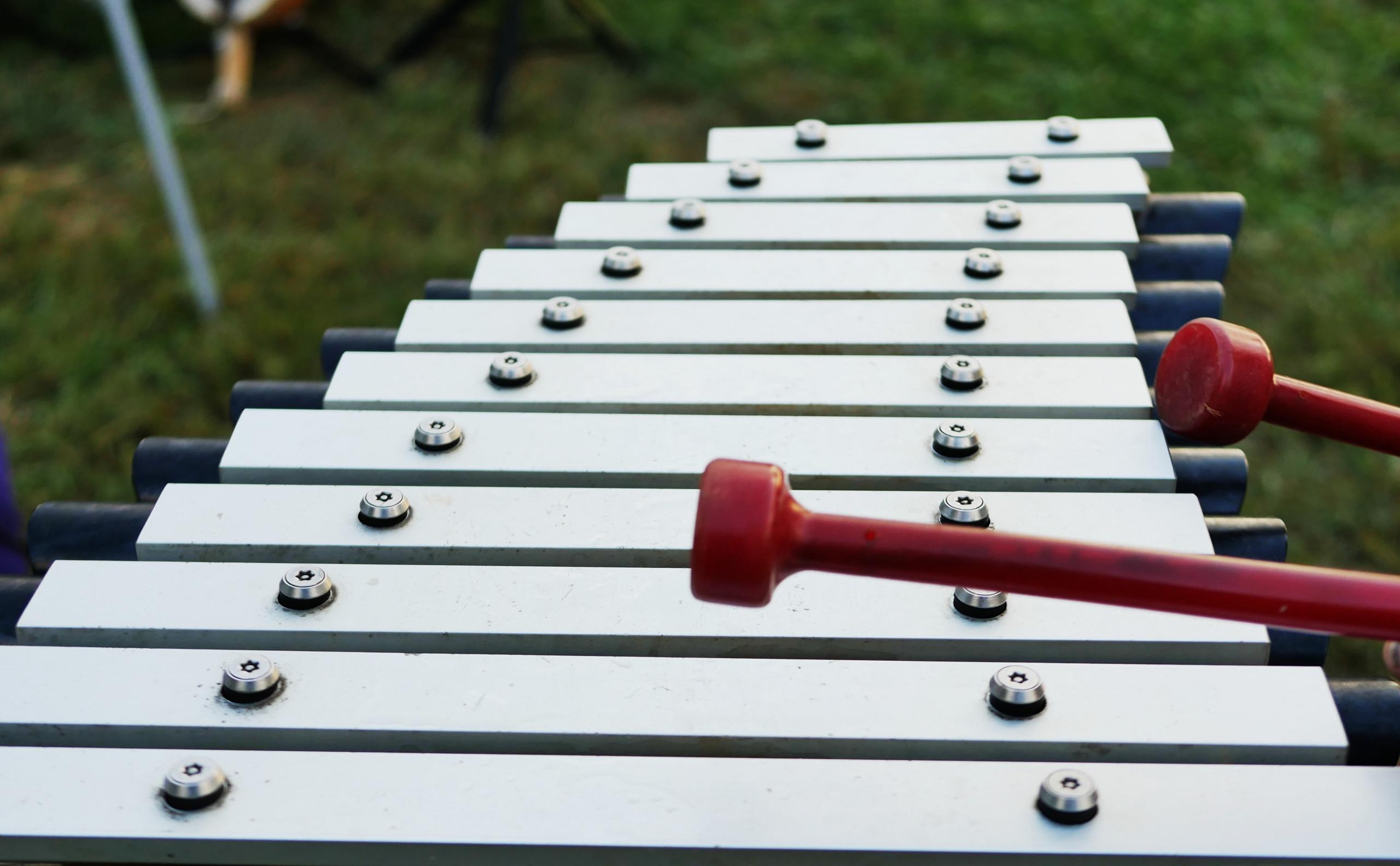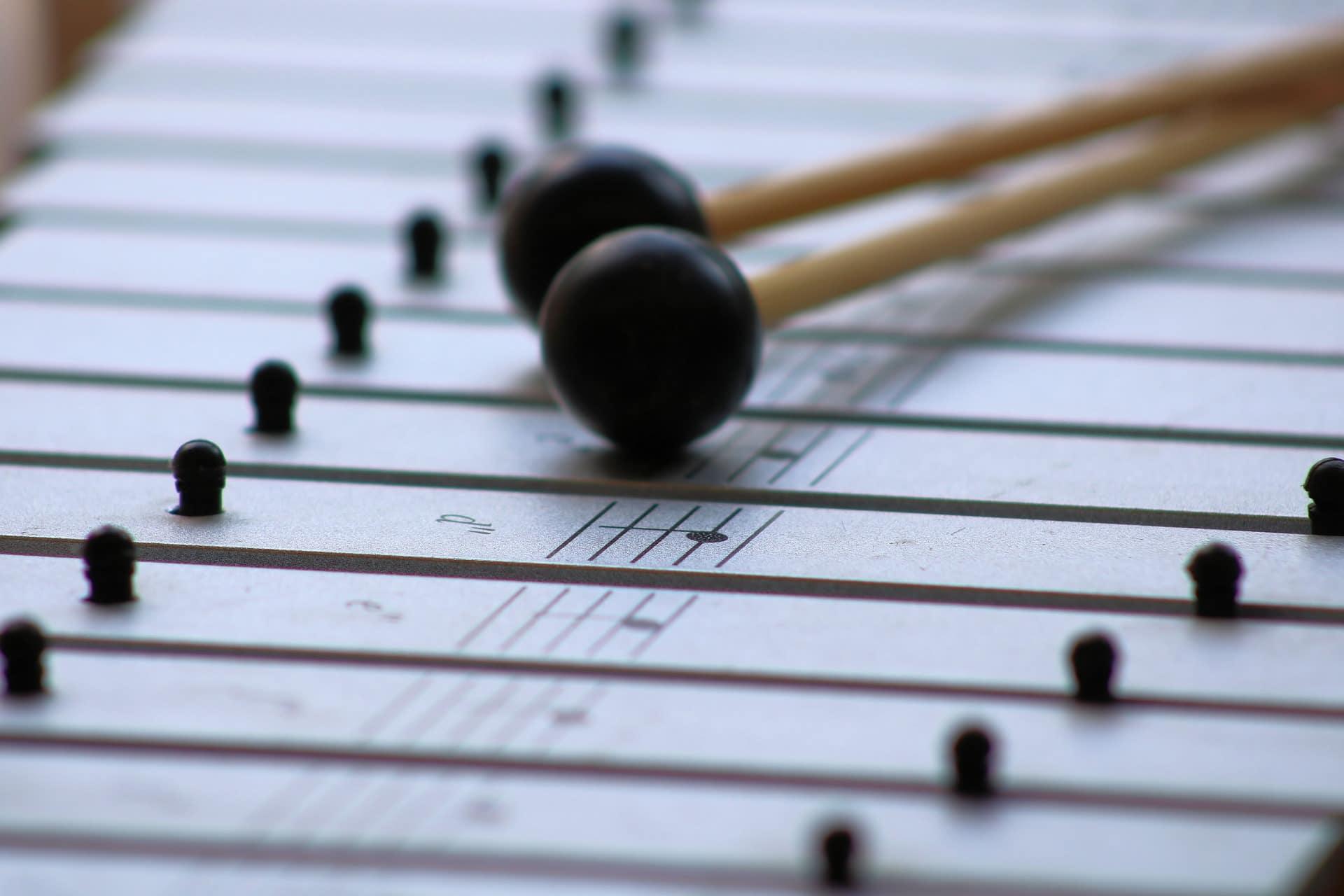You must certainly have heard about the xylophone instrument. You may have been introduced to the xylophone as a young child where you had a colourful instrument made of wooden bars that you would strike using mallets.
As a child, you may not have known that this instrument was called a xylophone, however, it is one of the most popular percussion instruments on the list of percussion instruments.
Music acts like a magic key, to which the most tightly closed heart opens. Maria Von Trapp
It is known for being played during pop song performances and rock songs. In fact, the sounds emitted from the xylophone are suitable for most genres of music.
In order to understand if the xylophone is the right instrument for you, it becomes essential to trace the historical trajectory of the instrument and also learn some xylophone playing techniques.
Once you get a feel for the xylophone, you might just be inspired to start playing this instrument. Then, you can start looking at techniques that you will need to play the xylophone yourself once you find the right xylophone teacher for you.
If reading all about the xylophone doesn't whet your appetite for wanting to play the instrument, here's hoping a xylophone player like Teddy Brown can.
Let’s get to know this instrument better.

X is for Xylophone!
You probably know what a xylophone looks like and you might even have the xylophone toy that you enjoyed playing with lying around your house somewhere.
The xylophone is known as a percussion instrument as you can hit it with mallets to produce a sound.
Basically put, it is a percussion instrument that has an arrangement of wooden bars. While both the marimba and the xylophone are instruments that you hit using mallets, percussionists will tell you that neither instrument is like the other except for the fact that they look similar and are struck in a similar manner.
You may be curious to know how exactly the marimba differs from the xylophone and you would be astonished to know that the xylophone differs from the marimba mainly because of the higher-pitched sound it produces. The sound is the result of the xylophone not having resonators beneath the horizontal bars which leads to that tonal difference between the marimba and the xylophone.
While there are differences between the two instruments, they both can be classified as belonging to a family of idiophones. Idiophones are considered instruments that produce a sound as a result of the vibration of the whole struck element. While most xylophones are made of wood and called xylophones, you can get a xylophone made of metal and that is called a metallophone.
To get to know the xylophone more, we ought to trace its history.

Xylophone 101: Introduction and History
It is important to trace the historical underpinnings of every musical instrument before you start to play it. A look at the history of the marimba instrument may help you get to grips with the history of the xylophone. The histories of the marimba and the xylophone do often overlap.
Like the marimba, the xylophone is an instrument that is played throughout Asia, Africa, and Europe. While oral tradition passed down in African culture states that it was the Marimba goddess who created both the marimba and the xylophone, the tradition of playing the xylophone is also found in south-east Asia, particularly among people from Java and Bali. Then again, instruments that resembled the xylophone were used in China for a considerable amount of time.
It is thus hard with oral traditions to trace the exact roots of the xylophone. Yet, it is important to note that many historians have argued that the instrument found in Africa and the percussion instrument found in Asia were entirely different instruments.
The truth of the matter is that it remains difficult to state where the xylophone as we know it today originated from.
From Africa and Asia, the instrument travelled across seas to Europe. It was Camille Saint-Saens, the French composer, who first played the xylophone during a classical piece.

As history would have it, the xylophone grew in popularity and is still a popular percussion instrument to date. However, the xylophone is not the only percussion instrument, you can further learn to play the tambourine and the triangle.
All About Xylophone Music
There’s no denying that the xylophone produces cheerful tunes. But playing the xylophone isn't just fun, it's also a great way to improve your hand-eye co-ordination and rhythm.
Music is the great uniter. An incredible force. Something that people who differ on everything and anything else can have in common. Sarah Dessen
Yes, the history of the xylophone is rich but it also points to the fact that there is more than one type of xylophone. Alongside the metallophone, the balafon is a more dated type of xylophone. This instrument was played throughout West Africa and consists of twenty-one keys fixed to the wooden xylophone frame with a leather strap.
Another type of xylophone is the glockenspiel. While some people consider it to be a xylophone, it differs considerably as it is made of metal instead of wood. Based on this fact, the glockenspiel may as well be a metallophone instead of a xylophone.
In terms of the music produced by the xylophone, the chromatic xylophone has a note of the scale, across different octaves, with sharps and flats.
When it comes to pentatonic and diatonic xylophones, these instruments have the notes of a given major scale – either five, in the case of the pentatonic, or eight in the case of the diatonic.
If the xylophone is not the instrument for you, learn all about how to play the steel hang.

Xylophone Melodies Made Easy: A Step-by-Step Guide
Again, playing any percussion instrument is never as easy as it looks. If you are intending to play the instrument well, you need to consider all the different techniques that playing the instrument entails using.
The nailing technique is considered important and entails familiarising yourself with mallets. While hitting the wooden bars with a stick does produce a sound, you can't expect to become a percussion instrument player if you hit the sticks anyhow. Holding the mallets in the correct ways means success with the nailing technique.
To hold the mallets correctly, you ought to be relaxed, have great balance and then start playing. Your ears need to be above your shoulders when you play. Once you are standing relaxed and confident, hold the mallets by gripping the stick with your thumb and pointing finger. Steadily curl all of your fingers around the stick.
When you become a confident xylophone player, the best position needed for playing this instrument will become like second nature to you. The trick to success is to find someone who will teach you how to position yourself and play the instrument first.
The Melodic Sounds of the Xylophone
The xylophone is an instrument that you have heard being played in many stage performances and sometimes even in the songs that you enjoy.

Once you take an interest in the instrument and advance in your journey as a xylophone player, you will hear the xylophone sounds in classical, jazz, and contemporary music.
You may have heard the xylophone being played in one of Evelyn Glennie's performances. Evelyn Glennie is known as a legend of orchestral percussion music with such an illustrious career in the percussion instrument field.
Despite being deaf, Evelyn is making an impact in the music world and she proves that you don't need to hear to play the instrument well, you just need to be able to feel the sound that you produce.
If you haven't heard of Evelyn Glennie, you may certainly have heard of Pink Floyd. This UK band utilises instruments to enhance the sounds of their songs.
Are you the next solo artist like Evelyn Glennie or will you be the xylophone player in a South African band?
Xylophone Skills Unleashed: Techniques and Tips for Beginners
You can search far and wide for tips on how to play the xylophone but the best way to like how to play an instrument such as this one is to get hands-on training. It is for this reason alone that we believe if you are keen on playing the instrument, you should reach out to a percussion instrument instructor.
You can search for a xylophone teacher on the Superprof site. Once you start xylophone lessons with one of our enthusiastic tutors, you will start to understand if you are fit for this musical scene or not. You may also realise that you have great potential playing the instrument and within no time advance from a beginner xylophone player to a more advanced player.
The xylophone can take you on a journey of cultural appreciation and musical enrichment.
Ready to strike those bars and see where they lead?















